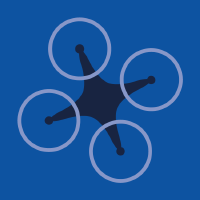Topic Menu
► Topic MenuTopic Editors






Recent Advances and Technologies in Emergency Response, Security and Disaster Management Applications
Topic Information
Dear Colleagues,
Several types of disasters are increasing in frequency and severity in the modern world, with significant impacts on human lives and the economy. Disaster management planning is structured around the disaster management cycle model with four stages, namely, mitigation, preparedness, response, and recovery. Technological developments in the fields of IoT, edge computing, digital twins, machine learning, computer vision, embedded systems, emergency communications, and integrated sensors and platforms, can play a significant role in hazard monitoring, forecasting and prediction, disaster risk assessment, communication and preparedness activities, systems, and processes which enable individuals, communities, governments, businesses, and others to take timely action to reduce disaster risks in advance of hazardous events. This topic invites the submission of manuscripts that present both research in both academia and industry associated with disaster and crisis management applications.
Dr. Evangelos Maltezos
Dr. Eleftherios Ouzounoglou
Dr. Panagiotis Michalis
Dr. Angelos Amditis
Dr. Stefanos Vrochidis
Prof. Dr. Norman Kerle
Dr. Christos Ntanos
Topic Editors
Keywords
- IoT
- security
- situational awareness
- edge computing
- digital twins
- Earth observation
- pattern recognition
- object detection and tracking
- localization
- machine learning
- feature extraction
- embedded systems
- UxVs
- speech recognition
- emergency communications
- triage
- wearables
- embedded algorithms and systems
Participating Journals
| Journal Name | Impact Factor | CiteScore | Launched Year | First Decision (median) | APC | |
|---|---|---|---|---|---|---|

Applied Sciences
|
2.7 | 4.5 | 2011 | 16.9 Days | CHF 2400 | Submit |

Drones
|
4.8 | 6.1 | 2017 | 17.9 Days | CHF 2600 | Submit |

Information
|
3.1 | 5.8 | 2010 | 18 Days | CHF 1600 | Submit |

Sensors
|
3.9 | 6.8 | 2001 | 17 Days | CHF 2600 | Submit |

MDPI Topics is cooperating with Preprints.org and has built a direct connection between MDPI journals and Preprints.org. Authors are encouraged to enjoy the benefits by posting a preprint at Preprints.org prior to publication:
- Immediately share your ideas ahead of publication and establish your research priority;
- Protect your idea from being stolen with this time-stamped preprint article;
- Enhance the exposure and impact of your research;
- Receive feedback from your peers in advance;
- Have it indexed in Web of Science (Preprint Citation Index), Google Scholar, Crossref, SHARE, PrePubMed, Scilit and Europe PMC.


